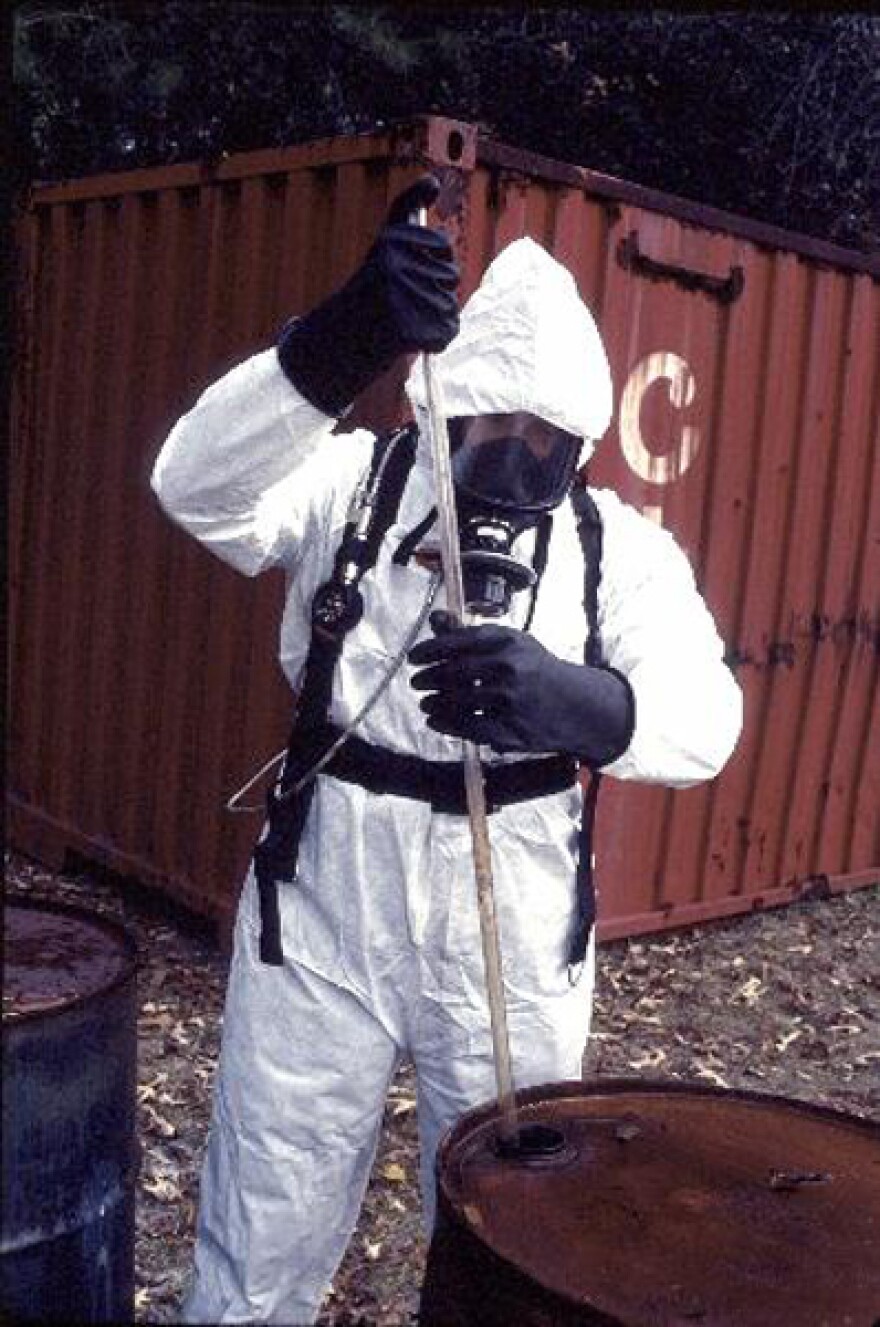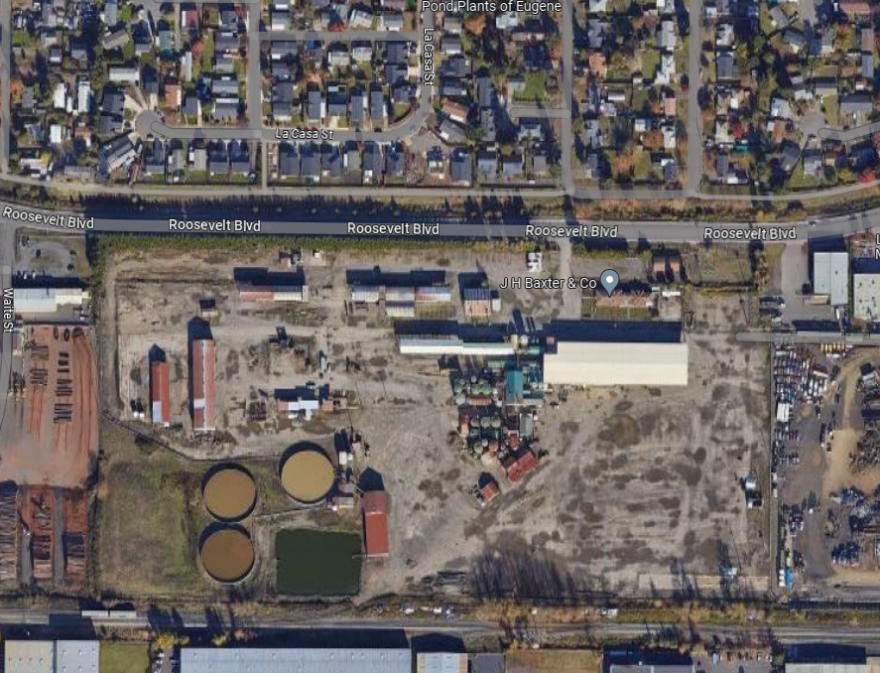The extent of soil removal for residences around the old J.H. Baxter site in Eugene may increase, both in numbers and depth.
Soil sampling in yards and gardens over the past two years have revealed the presence of dioxins, toxic chemical compounds that can cause cancer and other ailments.
Previously the reported number of affected homes was seven, but Dylan Darling of the Oregon Department of Environmental Quality (DEQ) said testing shows there may soon be four more properties.
“The removal of the contaminated soil, that’s going to be going down to a depth of six inches to two feet. In general, it’s about a foot down,” Dylan told KLCC. “And the cleanup plan calls for removing trees to allow for complete removal of contaminated soil. In all, there’s about seventeen trees that will be removed.”

Property owners who want replacement trees can request them from the DEQ after soil removal is completed.
The first phase of soil and tree removal will start in October, says Darling.
The J.H. Baxter wood treatment plant closed in January 2022 after 80 years of operation. Two class-action lawsuits have been filed against the company for alleged harm to the environment and residents. Both are in the discovery phase, due to finish at the end of October.
The EPA helps out
The federal government is helping the DEQ with operations surrounding the Baxter site.
Bill Dunbar is a spokesman with the EPA’s Seattle Office. He told KLCC that besides helping the DEQ with soil sampling and testing for dioxins in residential yards, his team is on the Baxter site itself. The EPA is investigating old chemical tanks and determining if there’s any seepage of toxins into the environment, including groundwater.
“Hopefully that will help us determine whether the facility has created enough damage or is enough of a risk to people’s health that we might need to use what we call the Superfund, to access a pot of money that will allow us to do a long-term, thorough, soup-to-nuts cleanup of the facility.”
Dunbar added it’s a laborious process, so it may be another year or two before a determination can be made for the Baxter site’s Superfund status. Achieving this distinction would enable millions of federal dollars to be invested towards cleaning up the site.










